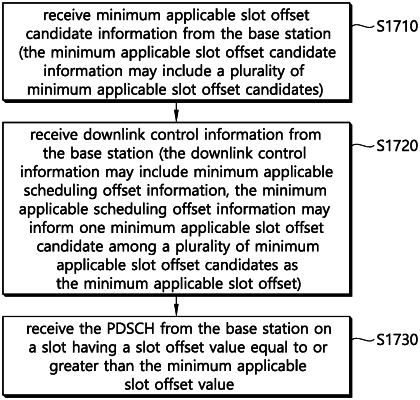| CPC H04W 72/23 (2023.01) [H04J 11/0079 (2013.01)] | 11 Claims |

|
1. A method for receiving downlink control information in a wireless communication system, the method performed by a user equipment (UE) and comprising:
receiving, from a base station, the downlink control information; and
receiving, from the base station, a physical downlink shared channel (PDSCH) based on the downlink control information,
wherein the downlink control information includes minimum applicable scheduling offset information, and
wherein the minimum applicable scheduling offset information informs the UE of a minimum applicable slot offset,
wherein the minimum applicable slot offset is an offset related to the UE not being expected to receive the PDSCH based on a slot offset smaller than the minimum applicable slot offset, and
wherein the minimum applicable slot offset is not applied based on a default PDSCH time domain resource allocation being used and a PDSCH transmission being scheduled with a cell-radio network temporary identity (C-RNTI), a configured scheduling-RNTI (CS-RNTI) or a modulation and coding scheme-cell-RNTI (MCS-C-RNTI) in a common search space associated with a control resource set (CORESET) 0.
|